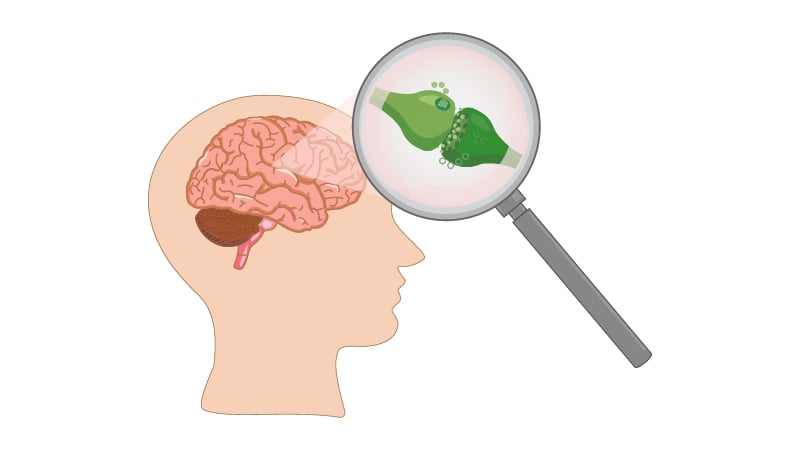CBD has generated significant public curiosity in recent years, not only among scientists and doctors but also among regular users. The list of the potential health benefits of CBD oil seems to have no end; with new research emerging every month, people are wondering where these effects come from.
CBD is a pleiotropic substance. In plain English, it means that it produces its effects through multiple molecular targets. Studies have identified more than 65 molecular pathways of CBD.
Although the cannabinoid has little direct influence on the two cannabinoid receptors (CB1 and CB2), it modulates the endocannabinoid system, reaching several non-cannabinoid receptors and ion channels.
In this article, we’ll explain how CBD works in detail. You’ll understand how CBD interacts with our bodies, what the potential benefits are, and whether or not it needs other cannabis molecules to grow to its full potential.
Let’s start with some basic definitions.
What is CBD?
CBD is the acronym for ‘cannabidiol’ and is extracted from cannabis plants. Cannabis contains over 100 compounds known as cannabinoids, each having its unique effects on the endocannabinoid system (ECS). THC (tetrahydrocannabinol) and CBG (cannabigerol) are the other well-known cannabinoids.
CBD is a non-intoxicant, meaning people don’t get high after using it. Advocates are touting the compound for its broad range of health benefits, including its positive influence on the nervous and immune systems. Although the Food and Drug Administration (FDA) doesn’t regulate the purity and safety of CBD, the substance is considered safe and well-tolerated in humans.
The most efficient extraction method for CBD oils is through the use of carbon dioxide. The CO2 is applied in its supercritical state, where it possesses the properties of gas and liquid at the same time — stripping the desired compounds from the plant material. The combination of pressurized CO2 and low temperatures allows the manufacturer to maximize the CBD yields from the process.
Manufacturers usually extract CBD from the whole plant, including the stem, stalk, leaves, and flowers. The resulting product contains the original chemical profile of the hemp plant, providing the endocannabinoid system with a plethora of benefits.
How Does CBD Work in the Body?

As mentioned, CBD works on over 65 molecular pathways. However, the most important mechanism of action comes from CBD’s interaction with the endocannabinoid system (ECS).
CBD and the Endocannabinoid System
The ECS is essential for our understanding of how CBD works.
The ECS is a complex biological network in the human body. It was discovered in the 1990s, and since then, medical researchers have been referring to it as the major regulatory network. Today, experts know that the ECS impacts several major processes, including mood, memory, sleep, appetite, pain perception, immune function, fertility, and more (1).
The main role of the endocannabinoid system is to maintain homeostasis in the body. Homeostasis is a fancy term to describe the balance between the said functions regulated by the ECS.
The ECS is made from three components: endocannabinoids, receptors, and enzymes.
Here’s a brief overview of each compound:
- Endocannabinoids – these are the chemical messengers produced by the ECS. They bind to cannabinoid receptors or modulate their activity to exert certain actions on the body and brain. Endocannabinoids complement the body by keeping internal processes running smoothly.
- Receptors – there are two types of cannabinoid receptors: CB1 and CB2. They exist throughout the body and enable cannabinoids to produce their beneficial effects.
- Enzymes – they are responsible for breaking down endocannabinoids once the body has used them.
Cannabinoid receptors occur in various parts of the body. CB1 receptors are primarily found in the central nervous system and control movement, coordination, memory, mood, pain, appetite, and other functions. CB2 receptors occur in the peripheral nervous system and immune system, influencing inflammation and pain.
The enzymes break down the cannabinoids so they can bind with receptors. Researchers have found that CBD doesn’t directly attach to cannabinoid receptors but it has some influence on them. The activation of these receptors allows people to experience the health benefits associated with CBD oil.
What Does CBD Do to Your Body?
Besides the endocannabinoid system, CBD also uses non-cannabinoid receptors to exert its actions on the body and brain. The non-intoxicating effects of CBD make it ideal for daily supplementation. In addition to regulating our emotional well-being, CBD may alleviate physical discomfort and boost the performance of our immune system.
Let’s take a look at how CBD works from a scientific perspective.
CBD Activates Serotonin Receptors
Brazillian researchers in collaboration with scientists from King’s College in London have found that CBD modulates the activity of our nervous system. At high concentrations, CBD activates the 5-HT1A serotonin receptor, thereby improving our response to stress and regulating mood. This receptor is involved in a range of biological and neurological processes, including anxiety, appetite, sleep, pain perception, nausea, vomiting, and addiction (2).
More interestingly, CBDA (cannabidiolic acid), the raw, unheated version of CBD from cannabis also has a strong affinity for this receptor, even stronger than CBD. Preclinical research suggests that CBDA has the potential to reduce nausea and vomiting more effectively than other cannabinoids.
CBD Interacts with Ion Channels
CBD directly engages with various ion channels to confer its positive effects. For example, it binds to TRPV1 receptors, which also play the role of ion channels. TRPV1 mediates inflammatory response, pain perception, and body temperature.
Scientists also refer to TRPV1 as a “vanilloid receptor,” named after the aromatic vanilla beans. Vanilla contains eugenol, an essential oil that has painkilling, antiseptic, and vasodilatory properties. Historically, vanilla has been used in folk medicine for headaches.
CBD binds to TRPV1, influencing the way pain signals are transmitted. Capsaicin, the active ingredient in hot chili peppers, uses the same mechanism of action, just like anandamide, the major endocannabinoid in our bodies (3).
CBD Acts on the GPR55 Receptor
CBD is an antagonist that inhibits or deactivates the GPR55 receptor, also dubbed an “orphan receptor” because researchers don’t know whether or not it belongs to a larger family of receptors. GPR55 is mostly found in the cerebellum region of the brain. It is engaged in regulating blood pressure, bone density, and seizure activity.
Studies also suggest that the activation of GPR55 may promote cancer cell proliferation, so deactivating this receptor may actually slow the spread of malignant cells. For example, a 2010 Swedish study found that bone reabsorption and cancer cell proliferation were decreased after administering CBD (4).

CBD Activates Nuclear Receptors
PPARs (peroxisome proliferator-activated receptors) are found on the surface of the cell’s nucleus. Activating the PPAR-gamma receptor contributes to the regression of human lung cancer cell lines. It also degrades amyloid-beta plaque, a key compound responsible for the development of dementia. PPAR receptors also regulate genes that are engaged in energy homeostasis, insulin sensitivity, lipid uptake, and other metabolic processes. CBD is the agonist of PPAR receptors, which is the reason why it may improve our physical well-being on top of keeping the brain in good shape (5).
CBD Inhibits the Uptake of Anandamide
Anandamide is one of the two major endocannabinoids produced by the ECS. It has a similar molecular structure to THC and regulates functions like mood, memory, inflammation, emotional processing, sleep, and pain perception. However, it is quickly broken down by FAAH (fatty acid amide hydrolase), a metabolic enzyme that ‘destroys’ endocannabinoids once they have reached the inside of the cell.
It turns out that CBD interferes with this process by reducing anandamide’s access to its transport channels, thereby delaying its passage into the cell’s interior. A research team of Stony Brook University found that CBD works as the inhibitor of anandamide reuptake, raising its concentrations in the brain’s synapses. Increasing endocannabinoid levels through inhibitory mechanisms may explain why CBD offers neuroprotective benefits (6).
CBD Regulates Neuronal Activity
Australian scientists report that CBD is a “positive allosteric modulator” of the GABA-A receptor. In simple terms, it enhances its binding affinity for its major endogenous agonist, gamma-Aminobutyric acid (GABA), which is sort of a handbrake for the mammalian central nervous system. The potential sedative effects of CBD are mediated by GABA receptor transmission. These effects result from the change of the GABA-A receptor in a way that improves the natural calming properties of GABA (7).
How Does CBD Work When You Take It with Other Cannabis Compounds?

CBD is one of over 400 compounds found in cannabis plants. There are also other cannabinoids, occurring in trace amounts, as well as terpenes and flavonoids — all of which influence the effects of cannabidiol.
Let’s take a closer look at each class of cannabis molecules.
What Are Trace Cannabinoids?
As you may guess by the name, these are the cannabinoids occurring in trace amounts in cannabis. Scientists have identified and synthesized 117 different cannabinoids, the most prominent being CBG, CBC, CBN, CBDA, CBDV, THCA, and Delta-8-THC.
Studies have found these cannabinoids to exert their own health benefits, including anti-inflammatory, painkilling, neuroprotective, antibacterial, and appetite-stimulating properties. Although their own effects aren’t as pronounced as they would be when isolated and administered in significant amounts, they amplify the health benefits of CBD.
What Are Terpenes and Flavonoids?
Terpenes are fragrant molecules that bind to receptors in the human body and carry a wide range of health benefits; flavonoids, on the other hand, are phytonutrients that facilitate the communication between cells on top of their own wellness-promoting effects. All the components work together to produce what scientists have named the whole-plant synergy or “the entourage effect.”
What is the Entourage Effect and Why Is It Important?
When reading about the benefits of different cannabinoids, or CBD and whole-plant extracts, you may have stumbled upon the term “entourage effect.” This concept was first introduced by Israeli researchers and further explored by neurobiologist and cannabis expert Dr. Ethan Russo in his work “Taming THC: potential cannabis synergy and cannabinoid-terpenoid entourage effects.” (8–9)
The entourage effect describes a situation where CBD and the aforementioned compounds interact synergistically to create a stronger effect than each compound alone.
For example, when you take THC in tandem with CBD, the latter will block the trippy potential of THC, preventing the mental discomfort experienced by users who take a dose that breaches their sensitivity threshold. On the other hand, trace amounts of THC are known to enhance the anti-inflammatory and tension-relieving properties of CBD.
Terpenes, in turn, complement the health benefits of cannabinoids. When a cannabis strain has high levels of beta-caryophyllene — a terpene found in black peppercorns, cloves, and broccoli — the compound binds to cannabinoid receptors, enhancing the anti-inflammatory and painkilling effects of cannabinoids. Limonene, a terpene found in the zest of citrus fruits, improves the absorption rate of other terpenes and cannabinoids; myrcene increases the permeability of the blood-brain barrier, ensuring faster effects from taking CBD oil.
The above makes full-spectrum CBD extracts superior to products based on CBD isolate. At Gold Bee, we make our CBD oils, capsules, gummies, and honey sticks using either full-spectrum or broad-spectrum CBD to ensure that you’re getting the most out of your supplementation. The cannabinoid profile, as well as the purity of our products, are proven with batch-specific certificates of analysis from third-party laboratories, which we provide via email.
Summarizing How CBD Works
CBD offers a myriad of health benefits through its interaction with the endocannabinoid system. However, the nature of this cannabinoid is more complex than what we see at first glance. CBD acts on several molecular pathways, influencing various receptors and organs in the body.
As researchers are preparing to fuel more resources into studies on cannabinoids and their health benefits, it’s only a matter of time until we fully understand the mechanism of action behind CBD’s versatility.
References:
- Battista, Natalia et al. “The endocannabinoid system: an overview.” Frontiers in behavioral neuroscience vol. 6 9. 14 Mar. 2012, doi:10.3389/fnbeh.2012.00009
- de Mello Schier, Alexandre R et al. “Antidepressant-like and anxiolytic-like effects of cannabidiol: a chemical compound of Cannabis sativa.” CNS & neurological disorders drug targets vol. 13,6 (2014): 953-60. doi:10.2174/1871527313666140612114838
- Muller, Chanté et al. “Cannabinoid Ligands Targeting TRP Channels.” Frontiers in molecular neuroscience vol. 11 487. 15 Jan. 2019, doi:10.3389/fnmol.2018.00487
- Whyte, S. L. et al. “The putative cannabinoid receptor GPR55 affects osteoclast function in vitro and bone mass in vivo.” Proceedings of the National Academy of Sciences of the United States of America (2009), 106, 38, 16511–16516.
- O’Sullivan, Saoirse Elizabeth. “An update on PPAR activation by cannabinoids.” British journal of pharmacology vol. 173,12 (2016): 1899-910. doi:10.1111/bph.13497
- Deutsch, Dale G. “A Personal Retrospective: Elevating Anandamide (AEA) by Targeting Fatty Acid Amide Hydrolase (FAAH) and the Fatty Acid Binding Proteins (FABPs).” Frontiers in pharmacology vol. 7 370. 13 Oct. 2016, doi:10.3389/fphar.2016.00370
- Bakas, T et al. “The direct actions of cannabidiol and 2-arachidonoyl glycerol at GABAA receptors.” Pharmacological researchvol. 119 (2017): 358-370. doi:10.1016/j.phrs.2017.02.022
- Ben-Shabat, S et al. “An entourage effect: inactive endogenous fatty acid glycerol esters enhance 2-arachidonoyl-glycerol cannabinoid activity.” European journal of pharmacology vol. 353,1 (1998): 23-31. doi:10.1016/s0014-2999(98)00392-6
- Russo, Ethan B. “Taming THC: potential cannabis synergy and phytocannabinoid-terpenoid entourage effects.” British journal of pharmacology vol. 163,7 (2011): 1344-64. doi:10.1111/j.1476-5381.2011.01238.x
